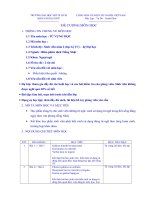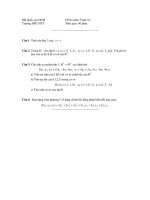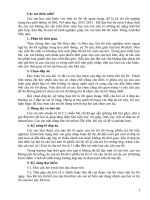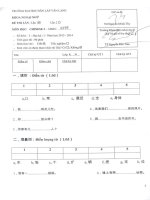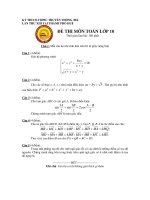Session 5 students upload để pass môn IB
Bạn đang xem bản rút gọn của tài liệu. Xem và tải ngay bản đầy đủ của tài liệu tại đây (3.3 MB, 52 trang )
Academic English
BBUS
Lecturer : Alan J Hartnett
Associate lecturers: Sarah Doan & Hoai Anh
Course outline
Expectations
Preparing to write
Academic reading
Debating
Final Essay
Critical thinking
Reliable sources
Essay development
Presentation
S1
S2
S3
S4
S5
S6
S7
You are here
Due
HW (Group)
500 words
•
S8
Due
• Random group
(lecture)
presentation (lecture)
•Final outline- Final indi.essay
• Choosing debating
Submit Group essay
• Random group
presentation
1000 words
(lecture)
• First draft_ Final
topics
indi.essay
Draft outline- Final indi.essay
S9
Random group
Second draft_ Final
presentation
indi.essay
(lecture)
Random group presentation
S10
Debating workshop
S11
S12
S13
Final draft_ Final
indi.essay
S14
• Group presentation
S15
Group presentation
S15+1w
Final individual
essay
Academic Reading & Writing
TABLE OF CONTENTS
1. Review (lecturer)
1. Introduction (1
st
group)
2. Ways of Reading (1
3. Note taking (2
nd
4. Summarizing (3
5. Evaluating (3
6. Q&A (4
th
rd
st
group)
group)
rd
group)
group)
group)
1. REVIEW
Researching & Citing
Lecturer
Guidance for presentation
•
•
•
•
Each group will have 15 minutes in total for delivering presentation
Groups are encouraged to add additional examples/ videos to support for your presentation
All members in each group must present
3 groups will be randomly selected for presentation; the remaining group will have 1 minute
for discussion and then give Q&A
1. INTRODUCTION
The appearance of MODERN TECHNOLOGY has led to the ignorance of
READING CULTURE
6 main BENEFITS OF READING
•
•
•
•
•
•
Mental Stimulation
Stress Reduction
Knowledge
Vocabulary Expansion
Stronger critical thinking skills
Improved focus and concentration
How many purposes of reading can you think of?
2. WAYS OF READING
-
Reading for pleasure
Reading for general
understanding
-
Reading to learn
Reading to evaluate critically
st
1 group
What are the differences between READING FOR PLEASURE and ACADEMIC READING?
READING MATERIALS TIME
HOW CAREFULLY WE THINK ABOUT
CONTENTS
2. WAYS OF READING
“Reading is an Art
&
Reader is an Artist.”
Reading for
underst-anding
Reading effectively
Reading for
Selective reading
research
Critical reading
Active reading
To be an Effective Reader, you need….
Don’t read front to back
Read for key details
Read the book once but your notes multiple
times
2 Strategies for Selective Reading
Skimming
Scanning
-
-
Definition
Example
Definition
Example
Active Reading involves:
Underlining
Writing comments
Making notes
Writing question
Summarizing
Stage 1 : Pre-reading strategies
•
•
Purpose: to become familiar
•
Stage 2: Reading strategies
Stage 3: Post-reading strategies
Intensive reading, which
•
with the text
means you read carefully
3 quick steps: survey – skim
and critically
– scan
•
Purpose: to strengthen
understanding and memory
•
•
“Survival” steps
Re
ad
ing
Un
de
for
rst
an
din
g !?
Recall
Review
READING for RESEARCH
Evaluate sources
Make sense of
Narrow your
reading lists
research
2. WAYS OF READING
Critical Reading
•PROCESS
Comprehending/ Restating
Summarising/ Desribing
Evaluating/ Interperting
Critical readers restate, describe and interpret what they read
st
1 group
22
2. WAYS OF READING
Critical Reading
Summarise
What the text does?
Evaluate
Comprehend
What the text
What the text says
means?
Critical reading
st
1 group
23
2. WAYS OF READING
Critical Reading
Not just read words
Infer meaning
from the text
Gain
Reflect on
knowledge
the text
from the text
Critical readers
st
1 group
24
2. WAYS OF READING
Critical Reading
Critique the
reliability
Critique the
Critique the style
argument
Critique the
author
st
1 group
25
